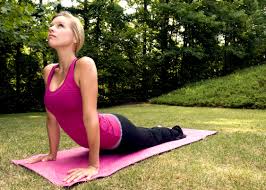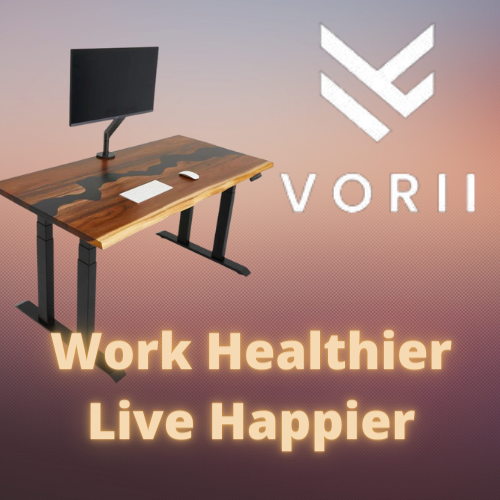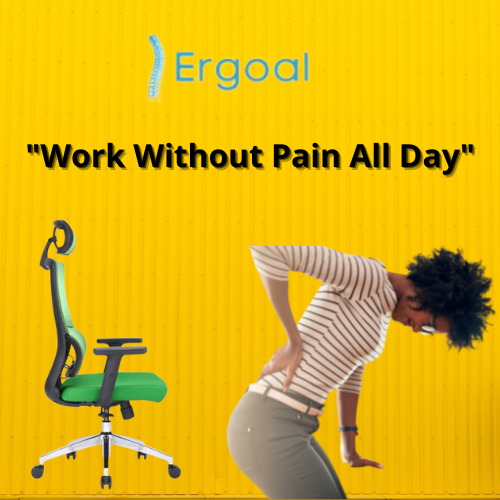Lately, I’m more aware of myself slouching. When I become conscious of it, I must remind myself to stand or sit up straight. But I revert right back to stooping as soon as I stop focusing on my posture. This was never a problem until my workday involved long periods of sitting. Then I started to notice some of the other things I do daily that had me sinking into an unattractive and habitual slouch.
Hunching over a computer was the number one offender.

I didn’t leave my seat for hours at a time and at other times when I was up and about or sitting down to eat, I was unconsciously leaning forward.
My smart phone was the second culprit.

I was rounding my shoulders and leaning my head forward to read my messages and text. Since texting has taken over calling as the preferred method of communication, I was spending noticeably more time in this slouch position.
Slouching on the couch while watching TV came in as a menacing third.

Too much binge-watching streaming series with no commercials left me with contracted muscles when I finally moved to walk the few feet to my bedroom.
Long car rides were noticeably uncomfortable when I made a stop.

Getting out of the car with back and leg stiffness and cramping made me aware of my slouching until I was able to straighten up – only to get back in the car for the next leg of the trip.
Slouching is Unattractive, and It’s Bad for Your Health!
So many people, now including children and teens, are developing a forward head posture.

Contributing to their slouching are texting and heavy backpacks. This sets them up at a very early age for chronic neck and back pain. This affects school, job, sleep, and recreation.
Forward Head Position + Sitting Too Long Puts the Brakes on Life
Physically, here’s what happens. Your head weighs about 10-12 pounds. Tilting your head forward adds 10-20 pounds of pressure on your neck for each inch. Then gravity pulls you forward even more and the muscles surrounding the spine get overworked. Looking down at your cell phone can be like hanging a 60-pound weight around your neck!
Slouching can affect your mood, your energy, your productivity, and your ability to handle stress. Not moving prevents the muscles from pumping fresh blood and oxygen to the brain where mood enhancing chemicals are released.
The Consequences of Sitting and Slouching

- – Obesity – Research suggests that sitting for extended periods can slow metabolism and inactivate fat-burning enzymes.
- – Pain – Sitting and slouching ends up restricting your range of motion in hip flexors, trapezoids in the neck, and anterior shoulder muscles. This can lead to herniated discs, damaged nerves, degenerated joints – all limiting activities and putting a damper on enjoyment of life.
- – Balance – Unused, weak muscles leave joints unstable and bone health compromised. Poor posture alignment changes your center of gravity. Altogether, they make you more prone to falls.
- – Pulmonary issues – you can’t take a deep breath since when your head is pulled forward, your torso rolls forward and your chest caves in.
- – Cardiovascular problems – your heart pumps harder to get blood out of a collapsed chest. Reduced blood flow decreases oxygen and nutrients to vital organs. Sedentary time is linked to a higher risk of cardiovascular disease and death due to heart attack or stroke.
- – Blood clots – Sitting can impede blood flow. Clots form most often in the deep veins of the leg, groin or arm.
- – Type II Diabetes – markers of insulin resistance and inflammation are increased.
- – Cancer – Studies have linked prolonged sitting to a greater risk of cancers where cancer-causing free radicals are not kept in check from the natural antioxidants that regular movement boosts.
Routines for a Healthier Posture
- 1. Stretch

I find that just 10 minutes of yoga poses such as downward and upward dog, cat-cow, bow pose, locust, sphinx, and wide-leg forward bends are helpful to prevent neck and back pain. It improves flexibility and mobility, increases body awareness, and incorporates breathwork. For increasing core strength needed for good posture, try Pilates.
- 2. Get Out of Your Chair
- – Set a timer and stand every 20-30 minutes and try to move around.
- – Aim to walk about 500 steps each hour. Low intensity activities, like walking have more beneficial affects on metabolism than moderate-to-high intensity activities.
- – Take a brisk walk during your lunch break. It’s a great remedy to improve concentration and receive a natural jolt of energy.
- 3. Stretch Muscles that are Shortened in your sitting position or looking down at a cell phone. This would include your:
- – Neck muscles – sit comfortably at your desk with shoulders relaxed. With mouth closed, look up at the ceiling. Open mouth and bring head back a few more inches and then close mouth and feel the stretch in the front of your neck.
- – Hip flexors – Get into a shallow lunge position and press your back hip forward until you feel a stretch where your thigh meets your pelvis.
- – Upper traps – drop each ear to the shoulder on the same side while the opposite shoulder relaxes and drops toward the floor.
- – Chest and front shoulders – to open, place hands at chest height on both sides of a door frame as you step through the door. Or when sitting, move your head straight back (like a double chin), place your arms in cactus position with upper arms parallel to the floor and thrust your chest forward. Remember to breathe.
- 4. Support an Upright Posture
- Consult with a fitness expert, chiropractor, physical therapist or other trained professional for strengthening exercises.
- – Strengthening the back and shoulder muscles of the body help correct front-to-back muscle imbalances.
- – Strengthening the core of abdominal and glute muscles help with back alignment.
- 5. Pay Attention to Your Standing Position – Practice this when brushing your teeth, preparing meals, standing at your desk, and waiting in line
- – Place your feet hip width apart and lean back on your heels
- – Unlock and relax your knees
- – Tilt your pelvis forward and the tailbone down
- – Suck in and engage your abdominal muscles
- – Keep your shoulders back and relaxed while your neck moves back
- – Imagine a string attached to a balloon and the top of your head pulling it upwards
- – Remember to breathe deeply
How to Stop Slouching While at Your Computer

- – Sit up tall in a chair, keep your chin parallel to the floor and draw your head and chin back
- – Your shoulder and arms should be at a 90-degree angle. Adjust armrests to support elbows.
- – Avoid leaning forward from the hips
- – Keep both feet on the floor and not dangling
- – Position your monitor straight ahead at eye level and don’t look down.
- – Use a separate keyboard and monitor if a laptop screen is below eye level
- – Take frequent breaks
- – Use an adjustable desk so you can stand while working on your computer
A Plan for Good Posture when Using Your Cell Phone

- – Bring cell phone screen to eye level so your head is not slouched forward
- – When at home, lie on the floor flat on your back with knees bent and feet flat on the floor while you hold your phone at half arm’s distance over your face
- – Use voice transcription for texting, social media posts and emails
The Healthiest Way to Sit in a Car, Plane, or Other Confined Space for a Prolonged Period of Time

- – Keep your knees higher than your hips
- – Keep your shoulders pulled back and use a lumbar support to keep your back curved
- – Adjust the headrest so you can lean back comfortably
- – Movements to do while sitting can include neck and shoulder rolls, shoulder stretch
- – Flex and rotate toes, feet, ankles, and knees
- – Stop for frequent breaks and get out the car or plane seat to stretch your limbs
- – Take a five-minute walk
- – Take frequent sips of water
 I’m so mindful of my posture and ask people to tell me when they see me bent over to stop slouching. The reminder is only slightly less annoying than embarrassing. But looking and feeling good is worth it. Like your mother use to tell you, “Sit up straight!”
I’m so mindful of my posture and ask people to tell me when they see me bent over to stop slouching. The reminder is only slightly less annoying than embarrassing. But looking and feeling good is worth it. Like your mother use to tell you, “Sit up straight!”
Consult with your health specialist before beginning any exercise program. You should be in good physical condition and be able to participate in the exercises described.

About Us
As holistic dentists, we've recommended products and services that supported our patients’ health for decades. In experiencing our own health challenges from mercury toxicity, we worked closely with many natural, alternative, and integrative health practitioners who aided our recovery as well as our patients’. We built this site to provide you with a simple-to-use, comprehensive, informational, and functional resource for your physical, emotional, and spiritual health & well-being.




































